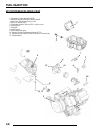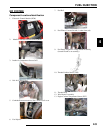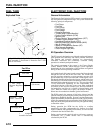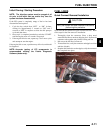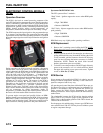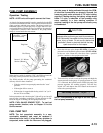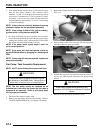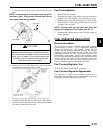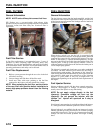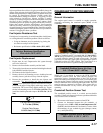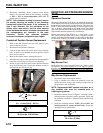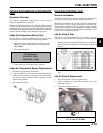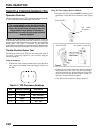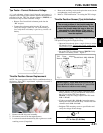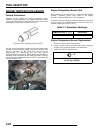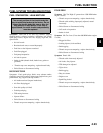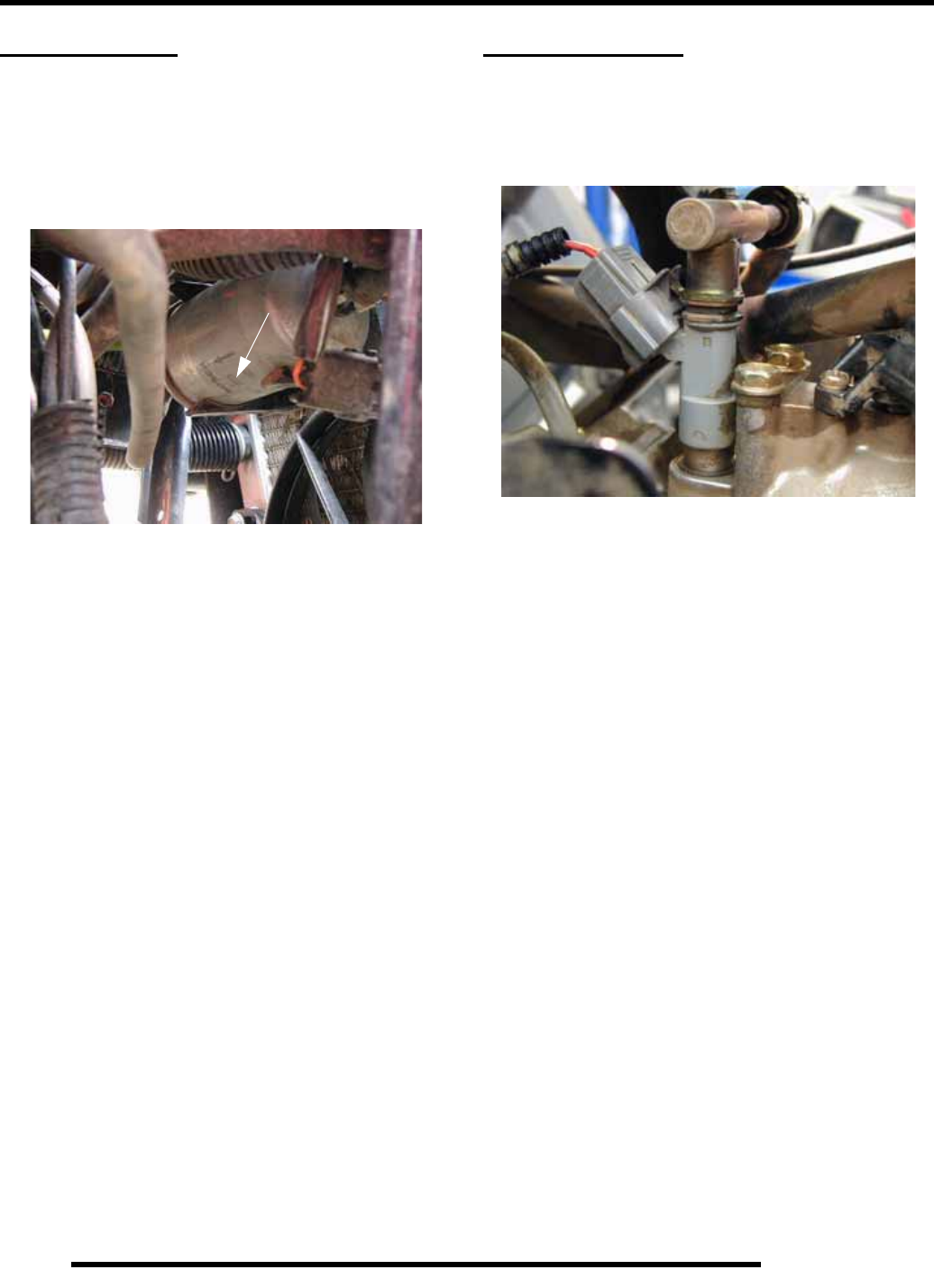
4.16
FUEL INJECTION
FUEL FILTERS
General Information
NOTE: All EFI units utilize quick connect fuel lines.
EFI Engines use a non-serviceable, high-volume, high-
pressure, 30-micron internal fuel pump filter and a replaceable
10-micron, in-line fuel filter. Only the 10-micron filter is
replaceable.
Fuel Filter Service
In line filter replacement is recommended every 2 years of
operation or more frequently under extremely dusty, dirty
conditions. Use only the specified filter, and install it according
to the directional arrows. DO NOT use an aftermarket filter, as
operating performance and safety can be affected.
Fuel Filter Replacement
1. Relieve system pressure through the test valve in the fuel
rail before servicing.
2. Loosen clamps and slide hose off the filter ends.
3. Install new filter with arrow pointing to the fuel line
connected to the injector rail and reinstall the clamps.
NOTE: When replacing the fuel filter, wet the interior
of the new filter with gasoline before installation to
ensure high pump pressure doesn't tear the filtering
material.
FUEL INJECTOR
General Information
The fuel injector mounts into the intake manifold, and the fuel
rail attaches at the top end. Replaceable O-Rings on both ends
of the injector prevent external fuel leakage and also insulate it
from heat and vibration.
When the key switch is on, the fuel rail is pressurized, and
voltage is present at the injector. At the proper instant, the ECM
completes the ground circuit, energizing the injector. The valve
needle in the injector is opened electromagnetically, and the
pressure in the fuel rail forces fuel down through the inside. The
“director plate” at the tip of the injector contains a series of
calibrated openings which directs the fuel into the intake port in
a cone-shaped spray pattern.
The injector is opened and closed once every other crankshaft
revolution. The total amount of fuel needed for one firing is
injected during each opening. The amount of fuel injected is
controlled by the ECM and determined by the length of time the
valve needle is held open, also referred to as the “injection
duration” or “pulse width”. It may vary in length from 1.5-8
milliseconds depending on the speed and load requirements of
the engine.
Fuel Injector Service
Injector problems typically fall into three general categories-
electrical, dirty/clogged, or leakage. An electrical problem
usually causes the injector to stop functioning.
NOTE: Do not apply voltage directly to the fuel
injector(s). Excessive voltage will burn out the
injector(s). Do not ground the injector with the
ignition “on”. lnjector will open/turn on if relay is
energized.
If an injector is not operating, it can indicate either a bad injector,
or a wiring/electrical connection problem. Check as follows:
Injector leakage is very unlikely, but in rare instances it can be
internal (past the tip of the valve needle), or external (weeping
around the injector body). The loss of system pressure from the
leakage can cause hot restart problems and longer cranking
times.
10 Micron Filter
Injector
Injector



